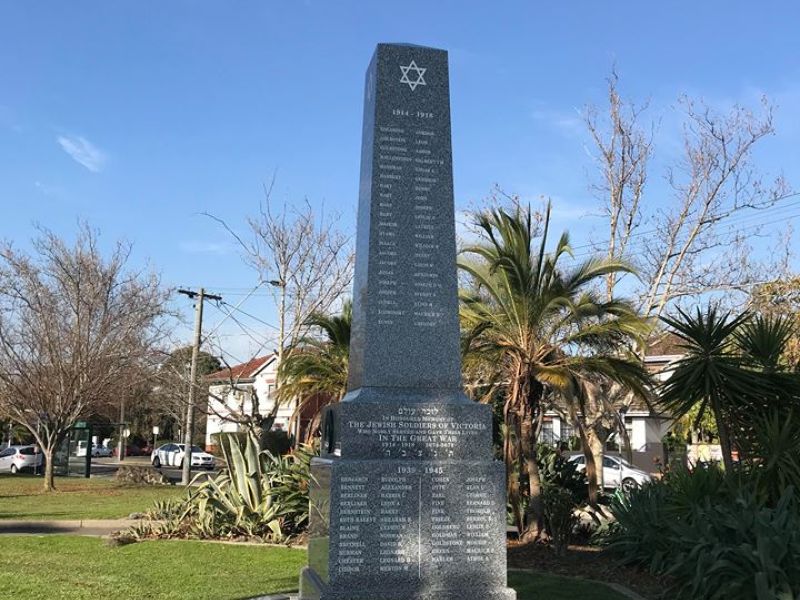Flight Lieutenant Leo Braham Patkin (401146)
Squadron, Royal Australian Air Force
KIA 2 January 1944
Leo Patkin was born on 28 September 1913 in the Melbourne suburb of St Kilda, the son of Maurice and Marie Patkin. His father worked as a director with the Myer Emporium in Melbourne.
Patkin was educated at Melbourne Grammar School and had his bar mitzvah in September 1926. He went on to attend Melbourne University. He was well known as a golfer, representing the Yarra Yarra Golf Club, and was also a keen squash player for the Lane Squash Club. After leaving school he followed in his father’s footsteps and worked for Myer, eventually becoming departmental manager.
On 16 September 1937, Patkin married Claire Benjamin. The couple went on to have two sons, Rex and Barry.
Leo Patkin enlisted in the Royal Australian Air Force on 3 January 1941. He trained as a pilot, and received his wings in July. By September he had promoted to sergeant.
On 16 October 1941, Patkin embarked for overseas service from Sydney, arriving in the United Kingdom in November. As part of the Empire Air Training Scheme, he was one of almost 27,500 RAAF pilots, navigators, wireless operators, air gunners, and flight engineers who, throughout the course of the war, joined Royal Air Force squadrons or Australian squadrons based in Britain.
After further specialist training, in April 1942 Patkin joined No. 296 Squadron, Royal Air Force. He trained in towing gliders, used to land soldiers on the continent, and he went on to become an instructor. On 24 August 1943 he was posted to No. 467 Squadron, RAAF. As part of Bomber Command, the squadron flew four-engined Avro Lancaster heavy bombers. By November he had been promoted to acting flight lieutenant.
On the night of 1 January 1944 Bomber Command launched a raid on Berlin. Patkin was the pilot of Lancaster “PO-K”, which took off from Royal Air Force Base Waddington shortly before 11.30 pm. The aircraft was attacked by enemy fighters before it reached the target and lost a wing as a result. Out of control, the aircraft spiralled into the ground and exploded in a field near Altmerdingsen, some 220 kilometres from Berlin. With all bombs still aboard the aircraft, the explosion shattered the roofs and windows of nearby houses.
Those killed in the crash with Flight Lieutenant Patkin were Australian Flight Sergeants Arthur Boettcher, William Blackwell, James Mudie, and Henry Scott, along with British airmen Flying Officer Raymond Maidstone and Sergeants Ralph Chambers and George Litchfield.
Seven bodies were recovered from the wreckage and buried at the Altmerdingsen Cemetery. Sergeant Chambers’ body was never recovered. After the war the remains of Commonwealth servicemen buried in Europe were examined and identified where possible. Patkin was identified by his clothing, and his remains were reinterred alongside those of his crewmates at Hanover War Cemetery, some 30 kilometres from the crash site. His grave bears the Hebrew inscription of a Jewish epitaph, meaning “May his soul be bound up in the bond of eternal life.”
In May 1944 Patkin’s father passed away; his mother followed that December. He was dearly missed by his wife and sons, and his many friends and colleagues, who posted in memoriam notices in the newspaper. One, inserted by his wife and sons, read: “Forever we will remember him,” while another from his aunt and uncle noted: “He was always smiling.”
- Australian War Memorial https://www.awm.gov.au/collection/R1717098
 Australian War Memorial
Australian War Memorial